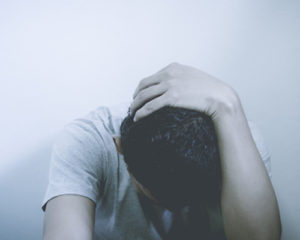Oxazepam is a prescription benzodiazepine, which is a type of central nervous system depressant used to treat the symptoms of anxiety and insomnia.
It is often sold under the brand name Serax and meant to be a safer alternative to more powerful benzos like Klonopin or Xanax.
However, even though it is comparatively weaker, like a benzodiazepine, oxazepam still carries a high risk of abuse and addiction and is possible to overdose on fatally.
Oxazepam, like benzodiazepines in general, was meant to replace barbiturates by being less addictive. Time, unfortunately, has proven this not to be the case, and benzos have gained a similar reputation for abuse and addiction.
How Does Oxazepam Work?
Oxazepam, while less potent and slower to take effect than other benzodiazepines, still works in basically the same way. It slows down activity in the central nervous system to create feelings of sedation and relaxation, as well as induce sleep.
Oxazepam does this by greatly increasing the amount of a brain chemical known as gamma-Aminobutyric acid (GABA), which already naturally performs the function of helping the body to regulate stress and anxiety, inhibiting nerve signals carrying these feelings so that they can’t reach the brain. Oxazepam mimics GABA and binds with the brain’s GABA receptors to activate them until they are overstimulated and produce an excess flood of GABA.
What Are the Signs of Oxazepam Addiction?

One of the difficulties involved in recognizing the signs of oxazepam abuse and addiction is the perception that it is a safe drug due to its status as not only a doctor-prescribed drug but also one that is on the milder end of the spectrum in comparison to stronger benzos like Klonopin, Xanax, or Halcion.
This incorrect assumption means that someone may be more likely to both misuse oxazepam and not recognize that their misuse may be escalating into abuse and potential addiction.
However, if someone has been regularly abusing oxazepam, some common, noticeable side effects can act as clues to a growing addiction, include:
- Problems concentrating
- Frequent drowsiness
- Altered sleep patterns
- Vertigo
- Dizziness
- Impaired coordination and reflexes
- Chronic migraines
The progression of abuse to addiction is marked by atypical behavior consistent with substance use disorders, as well as a loss of control that leads to compulsive oxazepam use, which becomes the priority in the addicted person’s life and the driving force behind nearly everything they do. The signs of oxazepam addiction will begin to pile up and become more obvious, as well as more serious.
Common signs of oxazepam addiction include:
- Increased tolerance to the effects of oxazepam
- Using oxazepam outside of the prescribed dosage
- Using oxazepam without a prescription
- Using oxazepam in unintended ways, such as snorting it as a powder
- Experiencing cravings and withdrawal when not using oxazepam
- Trying to hide or lie about oxazepam use
- Financial or legal problems resulting from oxazepam use
- A significant decline in work or school performance
- Feeling unable to function normally without oxazepam
- Being unable to quit using oxazepam even after trying to
If you have seen these signs in a friend or family member or are experiencing these symptoms yourself, the next step is to get help at a professional addiction treatment center as soon as possible.
What Is Involved in Oxazepam Addiction Treatment?
As with essentially any addictive substance, it is recommended that someone starts their oxazepam addiction treatment with medical detoxification. Medical detox is the processing of removing all drugs, alcohol, and any potential accompanying toxins from someone’s system to get them sober and stabilized.
While anyone undergoing detox should have at some level of medical supervision involved, oxazepam detox should never be attempted alone or without careful medical monitoring by a professional detox team.

The reason for this is that because it is a benzodiazepine, the withdrawal symptoms associated with oxazepam detox are some of the most dangerous, unpredictable, and potentially lethal that someone in detox can experience.
Common withdrawal symptoms can include hallucinations, delirium, suicidal behavior, grand mal seizures, and psychosis, as well as the possibility of benzodiazepine withdrawal syndrome, which can cause some symptoms to intensify as well as unusual ones to manifest.
Luckily, detoxing under the care of an experienced medical detox professional ensures that any potential complications can be handled safely and with the least amount of discomfort possible.
After completing detox, the next phase of oxazepam addiction treatment, ideally, is ongoing care in an addiction recovery treatment program. This is the best way to avoid relapse and the only way to truly address the different aspects and issues involved in someone’s oxazepam addiction, which has to happen for recovery to begin.
An addiction treatment program can be done on either an inpatient and outpatient basis, depending on a combination of factors unique to each person. These factors include the severity of the person’s addiction, if they have a history of relapse or a co-occurring disorder, as well as other specifics that will determine whether a client will do better living on-site for their treatment or remaining at home and commuting to their sessions.
During treatment, they will work with doctors, therapists, and staff to learn how to manage their addiction more effectively, with positive coping skills and tools to aid in maintaining long-term sobriety. Some common treatment therapies used to accomplish this include:
- Behavioral therapy
- Family therapy
- EMDR therapy
- Motivational interviewing
- Addiction education classes
- Holistic therapy
- 12-step programs
- Dual diagnosis treatment
- Medication-assisted treatment
- Relapse prevention planning
How Dangerous Is Oxazepam?
While oxazepam’s shorter half-life may make it less immediately dangerous than other, stronger and longer-lasting benzodiazepines, that doesn’t mean that abusing oxazepam is safe to do or that it won’t result in physical and mental damage as well as addiction and overdose.
To that point, someone doesn’t even have to be abusing particularly large amounts of oxazepam to experience negative consequences, as even taking it at the prescribed dose can lead to addiction if they continue to use for too long with “too long” being just a few weeks. If someone does abuse oxazepam in large amounts, it can happen much faster.
Abusing oxazepam also can result in a side effect called rebounding. Rebounding is when the user builds up a strong enough tolerance to oxazepam’s effects that the drug no longer works and the initial symptoms of insomnia and anxiety return, except they will now be much more intense than they were before using oxazepam.
It’s possible to overdose fatally on just oxazepam, but it is often mixed with other depressants like alcohol, opioids, and other benzodiazepines to strengthen its sedative effects, which significantly increases the risk of a rapid, fatal overdose.
The signs of an oxazepam overdose include:
- Blurred vision
- Fainting
- Dizziness
- Nausea and vomiting
- Confusion
- Impaired coordination and reflexes
- Dangerously shallow and slowed breathing
- Drifting in and out of consciousness
- Blue-tinged skin around fingernails and lips
- Coma
If someone is overdosing on oxazepam, it is imperative that emergency medical services be contacted as soon as possible to prevent not only death but also permanent damage to the brain and other organs due to a lack of oxygen.
Oxazepam Addiction Statistics
- Roughly 50 million prescriptions are written for oxazepam and other benzodiazepines every year in the United States.
- According to the National Institute on Drug Abuse (NIDA), in 2016, oxazepam and other benzodiazepines were involved in about 10,684 overdose deaths in the U.S.
- In addition, more than 30% of opioid overdose in the U.S. also involve benzos.
If you or a loved one is struggling with an oxazepam addiction, you can’t afford to wait, because addiction won’t. Take the first critical step toward recovery by undergoing detox in the comfort and safety of Serenity at Summit.
(2011, February). Benzodiazepine Withdrawal Seizures and Management. from https://www.ncbi.nlm.nih.gov/pubmed/21815323
(2012, April 02). Rebound Anxiety – Talk Therapy – Anxiety | HealthCentral. from https://www.healthcentral.com/article/rebound-anxiety
National Institute on Drug Abuse. (2018, August 09). Overdose Death Rates. from https://www.drugabuse.gov/related-topics/trends-statistics/overdose-death-rates
(n,d). Oxazepam. WebMD. from https://www.webmd.com/drugs/2/drug-8347/oxazepam-oral/details
(April, 2017). Oxazepam. Medline Plus. from https://medlineplus.gov/druginfo/meds/a682050.html


